7 Common Tomato Growing Mistakes and How to Avoid Them
- May 23, 2024
- 0 comment
Growing tomatoes is a cherished activity for many gardeners, but it often comes with its share of challenges. This guide addresses seven common mistakes in tomato gardening and offers straightforward solutions to help you avoid them. By learning these key strategies, you’ll enhance your gardening skills and increase your chances of enjoying a plentiful tomato harvest.
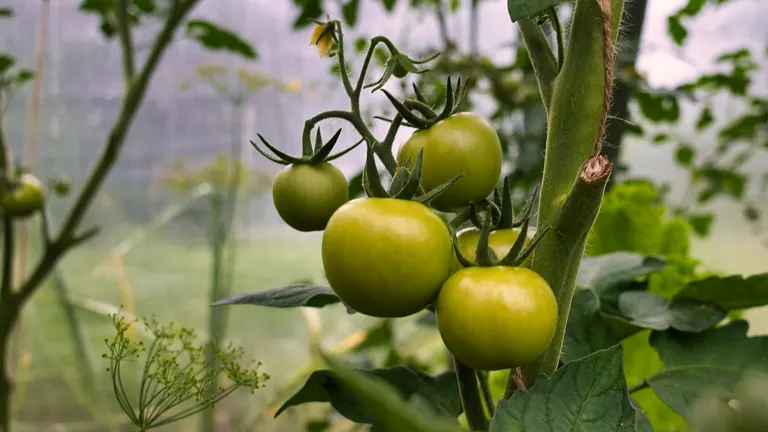
Let’s explore these practical tips and ensure your tomato plants thrive, making your garden a standout in the neighborhood!
List of Common Tomato Growing Mistakes:
- Choosing the Wrong Type of Tomato
- Planting Too Close Together
- Improper Staking
- Incorrect Watering Practices
- Inconsistent Watering Schedule
- Over or Under Pruning
- Fertilizing Errors
1. Choosing the Wrong Type of Tomato
Understanding the differences between determinate and indeterminate tomato types is crucial for successful tomato gardening. Determinate tomatoes, also known as ‘bush’ tomatoes, have a predetermined height, typically stopping growth at around 3-4 feet. They bloom and fruit over a shorter period of time, making them ideal for gardeners with limited space or those using containers.
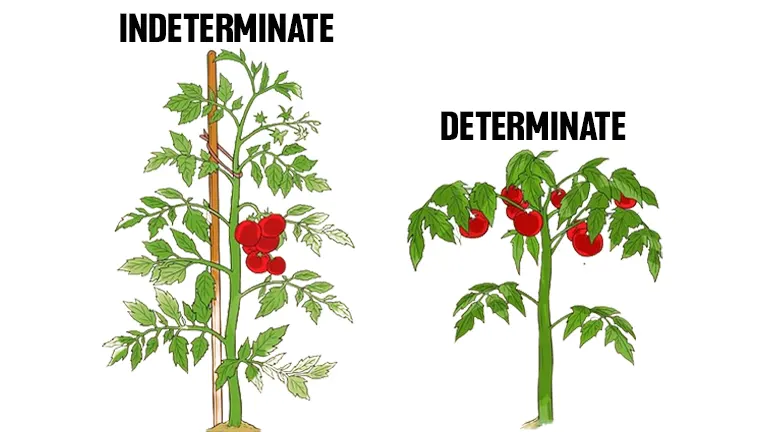
Indeterminate tomatoes, on the other hand, continue to grow and produce fruit throughout the growing season until the first frost. These varieties can reach heights of up to 12 feet and require more space and support, making them better suited for raised beds or traditional in-ground gardens.
Recommended Varieties:
- Determinate: Roma, Rutgers, Better Bush and Celebrity are excellent choices for their compact growth and earlier fruiting.
- Indeterminate: Cherokee Purple and Brandywine are perfect for heirloom enthusiasts, while Big Beef and Better Boy offer great disease resistance and continuous yields.
2. Planting Too Close Together
Tomatoes need their space to thrive. For indeterminate varieties that grow tall and spread out, it’s crucial to ensure about two feet of space between plants if they’re in raised beds. This spacing prevents the plants from shading each other, which could inhibit growth and encourage disease.
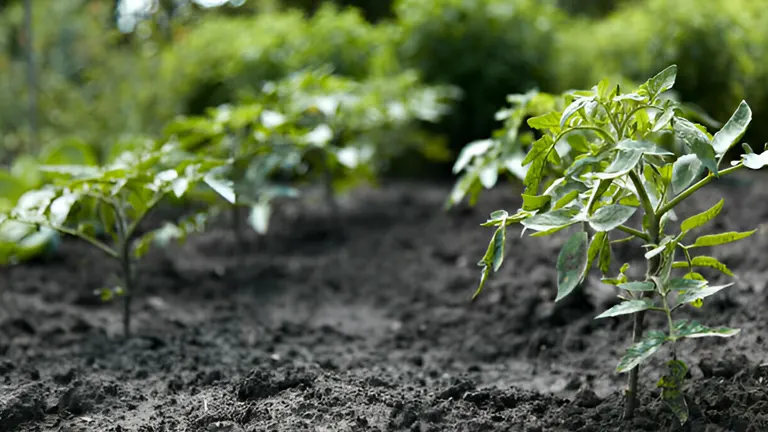
If you’re growing determinate tomatoes, which tend to be more compact, use large containers for planting. A single tomato plant per pot, ideally in a 7-gallon or larger container with a diameter of 12-14 inches, is recommended. This setup ensures each plant has enough room to grow without competition, promoting better airflow and reducing the risk of disease.
3. Improper Staking
Supporting your tomato plants properly is essential to ensure they grow healthily and produce abundant fruit. For determinate tomato types, standard tomato cages are usually sufficient. These cages help maintain the plant’s bushy form and support the weight of the fruit as the plant reaches its full, predetermined height.

Indeterminate tomato varieties, which grow taller and produce fruit continuously through the season, require stronger and more durable support systems. Six-foot oak stakes or robust cylindrical cages are ideal as they provide consistent support throughout the plant’s height. For exceptionally tall varieties like the Super Sweet 100, stakes may need to be extended up to 12 feet to accommodate the growth and ensure the plant remains stable and supported throughout the season.
Step-by-Step Guide to Staking Tomatoes
Staking supports the plant’s structure, helps manage disease by keeping fruits off the ground, and makes harvesting easier.
Materials Needed
- Stakes (wooden or metal)
- Soft ties or garden twine
- Hammer or mallet (for driving stakes)
Steps
- Choosing the Right Stake:
- Use at least 6-foot tall stakes for indeterminate varieties. Consider taller stakes if you grow varieties known to exceed this height.
- Use shorter stakes or cages for determinate varieties since they grow to a limited height.
- Staking Process:
- Install stakes early in the plant’s life to avoid disturbing the roots later.
- Drive stakes at least 6-12 inches deep into the ground to ensure stability.
- Position the stake about 4-6 inches away from the plant to avoid damaging the roots.
- Tying the Plants:
- Tie the plant to the stake loosely enough to allow growth and movement but securely enough to support the plant’s weight.
- Use soft materials like twine or strips of fabric to prevent damage to the stems.
- Maintenance:
- As the plant grows, add more ties and adjust the existing ones to accommodate new growth and prevent strain on the plant.
4. Incorrect Watering Practices
Correct watering techniques are crucial for healthy tomato plants. To avoid common diseases such as blight, which flourishes on wet foliage and in high humidity conditions, it’s essential to water tomatoes at the base. This method minimizes moisture on the leaves and stems, thereby reducing the risk of fungal infections.
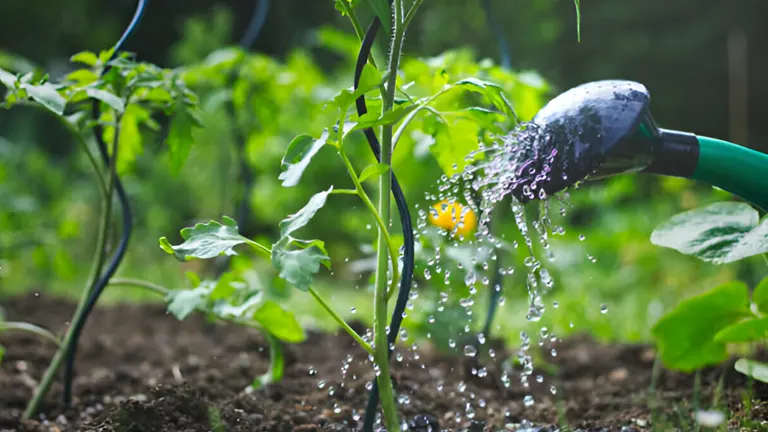
Watering directly at the soil level also ensures that the water reaches the roots where it’s needed most, promoting stronger root development and healthier growth. Additionally, this practice is beneficial during dry periods as it helps maintain consistent soil moisture, preventing stress on the plants and decreasing the likelihood of disease.
5. Inconsistent Watering Schedule
Maintaining a consistent watering schedule is vital for tomato health. Tomatoes need evenly moist soil to thrive. Variations in watering not only stress the plant but can also lead to blossom end rot, a condition often attributed to a calcium deficiency but typically caused by uneven water uptake. This disrupts the plant’s ability to absorb calcium consistently, leading to the characteristic blackening of the fruit’s bottom.

To prevent these issues, establish a regular watering routine that keeps the soil uniformly moist but not waterlogged. This consistency helps ensure that the tomatoes can absorb both water and nutrients effectively, promoting healthy growth and preventing nutrient-related disorders.
6. Over or Under Pruning
Pruning is a critical aspect of tomato care that can significantly affect plant health and fruit quality. Over-pruning can remove too much foliage that naturally shades the fruit, exposing tomatoes to intense sunlight which may cause sunscald. This condition is characterized by whitened, blistered patches on the skin of the fruit, which makes them susceptible to rot and insect invasion.
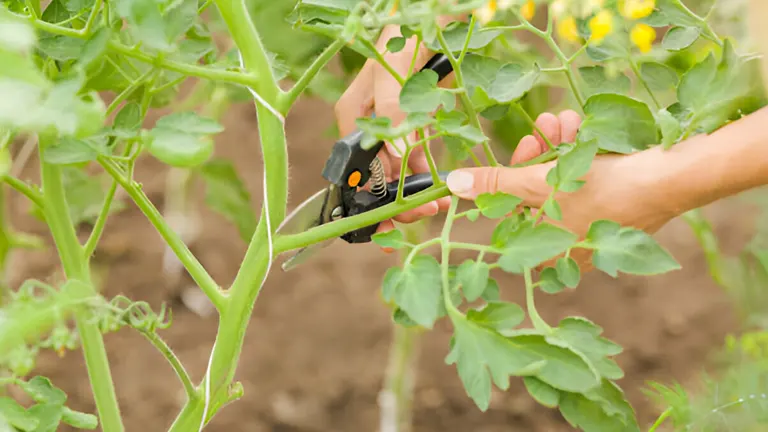
Conversely, under-pruning can lead to dense foliage that restricts air circulation around the plants, increasing the likelihood of fungal diseases. It’s crucial to find a balance to ensure healthy growth and fruit production.
Pruning Tip:
- Determinate Tomatoes: Prune only the lower limbs that are in contact with the soil. This reduces the risk of soil-borne diseases splashing onto the leaves during watering and minimizes the entry points for pathogens.
- Indeterminate Tomatoes: Regularly prune some of the inner limbs. This practice opens up the plant’s structure, enhancing airflow and light penetration, which are essential for reducing disease pressure and promoting even ripening of the fruit.
Step-by-Step Guide to Pruning Tomatoes
Pruning helps control the plant’s growth, improves air circulation, and can lead to a more fruitful harvest.
Materials Needed
- Clean, sharp pruning shears
- Garden gloves (optional, for protection)
Steps
- Identify What to Prune:
- For determinate tomatoes, focus on removing any suckers and leaves that touch the ground to prevent disease.
- For indeterminate tomatoes, remove lower leaves and any suckers below the first flower cluster to encourage better airflow and fruit production.
- Pruning Process:
- Always prune early in the morning when the plant is dry to avoid spreading diseases.
- Make clean cuts close to the main stem to avoid leaving stubs that could attract pests or disease.
- Regularly remove any leaves that show signs of disease or damage.
- Maintenance:
- Check plants weekly and remove any new suckers (shoots that grow from the stem joints) unless you’re training a new fruiting leader.
- Adjust your pruning as the plant grows and seasons change. More sunlight might require less pruning to prevent sunscald.
- Post-Pruning Care:
- After pruning, water the base of the plant if the soil feels dry to ensure it stays hydrated without wetting the foliage.
7. Fertilizing Errors
Proper fertilization is crucial for the health and productivity of tomato plants. Starting your tomatoes in rich compost provides them with a strong foundation of nutrients. As the growing season progresses, it’s important to watch for signs that additional nutrients may be needed. Symptoms such as pale or yellowing leaves can indicate a nutrient deficiency.
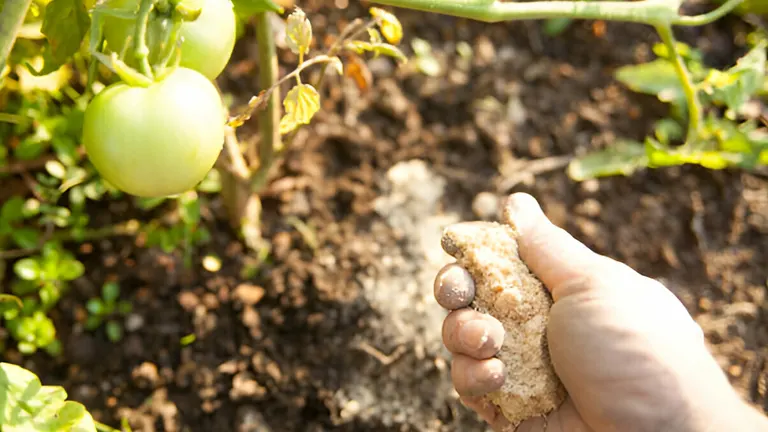
However, over-fertilization is a common mistake that can lead to nutrient burn, which is often visible as white or brown discoloration on the tips of the leaves. This can stress the plants and diminish their health and fruit quality.
I recommend using fish emulsion fertilizer, which is favored for its balanced nutrition that includes nitrogen, phosphorus, and potassium. Fish emulsion is also less likely to cause nutrient burn compared to more concentrated chemical fertilizers because it is more dilute and releases nutrients slowly. This makes it an excellent choice for feeding tomatoes, as it provides the necessary nutrients without the risk of overwhelming the plants.
Seasonal Tips for Growing Tomatoes
Spring
Spring is a critical time for setting the stage for a successful tomato season. Begin by starting your seedlings indoors 6-8 weeks before the last expected frost. If you’re in a cooler area, using grow lights and heat mats can help maintain ideal conditions for your seedlings. Once the threat of frost has passed and soil temperatures rise above 60°F, it’s time to move your plants outdoors. Gradually acclimate them to outdoor conditions over a week (a process known as hardening off) to minimize shock and stress.
Summer
As the peak of the growing season, summer demands consistent care. Regular watering is essential, especially during periods of high heat and drought. Applying mulch around your plants can help retain soil moisture and keep roots cool. This season also requires vigilance against pests such as aphids, tomato hornworms, and spider mites. Employ organic pesticides or introduce beneficial insects like ladybugs into your garden to naturally control pest populations.
Fall
In the fall, continue to harvest tomatoes as they ripen. If your growing season ends with the first frost, any unripe tomatoes can be harvested and left to ripen indoors on a sunny windowsill, or they can be used green in various recipes. To protect your plants from early frosts, cover them with frost cloths or harvest all the fruits preemptively.
Winter
Winter is a time for reflection and preparation. Review what worked and what didn’t in the past growing season, and start planning for the next year. This is also the perfect time to clean and store your gardening tools. For those in particularly cold climates who wish to continue growing, consider setting up an indoor growing system like hydroponics.
For Tropical Climates
Gardeners in tropical climates can often grow tomatoes year-round, as frost is not a concern. However, the rainy season can bring challenges, such as increased disease risk due to excess moisture. It’s important to choose heat-tolerant tomato varieties and possibly employ shading techniques during the hottest months to prevent issues like sunscald.
For Cold Climates
If you’re gardening in a cold climate with short growing seasons, select early-maturing tomato varieties to maximize your growing period. Utilizing cold frames or greenhouses can also extend your season, allowing you to start plants earlier and keep them productive for longer.
Conclusion
By applying these expert tips, your tomato plants are poised to thrive, potentially yielding an impressive harvest that could indeed turn your neighbors green with envy. Remember, cultivating a successful garden extends beyond mere natural talent; it’s about continuously learning, adapting, and applying new knowledge. Whether you’re a seasoned gardener or just starting out, each season is an opportunity to grow not only tomatoes but also your skills and passion for gardening.
FAQs
- When is the best time to plant tomatoes?
The best time to plant tomatoes is after the last frost in spring. This ensures that the soil is warm enough for seedlings to thrive. For most regions, this typically falls between late March and early May. - How do I choose the right tomato variety for my climate?
Consider your local growing conditions. In cooler climates, choose early-maturing varieties that can make the most of shorter growing seasons. In warmer areas, heat-tolerant varieties that can withstand high temperatures are ideal. Consult local nurseries or agricultural extensions for specific recommendations. - What are some effective methods to protect tomatoes from pests?
Regularly inspect plants for signs of pests and manage infestations early. Use insecticidal soaps or neem oil for organic control. Installing barriers like floating row covers can also prevent pests from reaching the plants. Rotate crops annually to reduce soil-borne diseases and pests. - How often should I water tomato plants?
Tomatoes need about 1-2 inches of water per week, depending on weather conditions. Water deeply a few times a week rather than a little every day to encourage deep root growth. Adjust your watering based on rainfall, temperature, and the plant’s stage of growth. - How can I prevent blossom end rot?
Ensure consistent watering as fluctuating moisture levels can inhibit calcium absorption, leading to blossom end rot. If your soil is deficient in calcium, consider adding lime or gypsum as per soil test recommendations. - Can tomatoes be grown in containers?
Absolutely! Container gardening is great for growing tomatoes, especially determinate or “bush” varieties. Use large containers (at least 5 gallons) with plenty of drainage, and choose a high-quality potting mix designed for vegetable gardening. - How do I know when it’s time to harvest my tomatoes?
Harvest tomatoes when they are firm and fully colored. For the best flavor, allow tomatoes to ripen on the vine unless weather conditions (like an impending frost) require earlier picking. Tomatoes will continue to ripen off the vine if picked at the breaker stage, where the fruit starts to change color.
We hope you found these tips helpful for your tomato gardening adventures! Do you have any tried-and-true techniques or fun stories about growing tomatoes? Share your thoughts and experiences in the comments below—we’d love to hear from you! If you found this article useful, please consider sharing it with fellow garden enthusiasts. Happy gardening!

Kristine Moore
Forestry AuthorI'm Kristine Moore, a seasoned garden landscaping professional with over 30 years of experience. My extensive career has been dedicated to transforming outdoor spaces into stunning, sustainable landscapes. With a deep understanding of horticulture, design principles, and environmental stewardship, I have become a respected figure in the field, known for creating harmonious, visually appealing, and eco-friendly gardens. My commitment to excellence and continuous learning in landscaping trends and techniques has solidified my reputation as an expert in garden design and implementation.


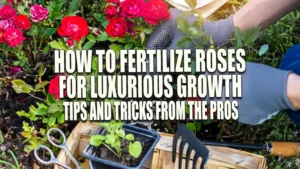
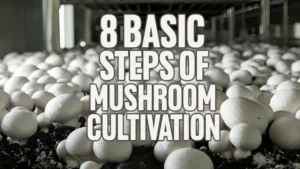


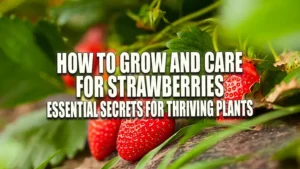

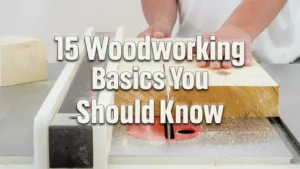
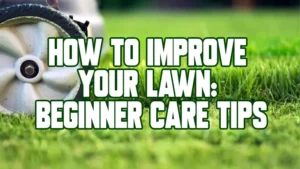


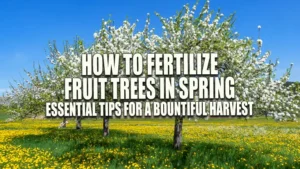
Leave your comment